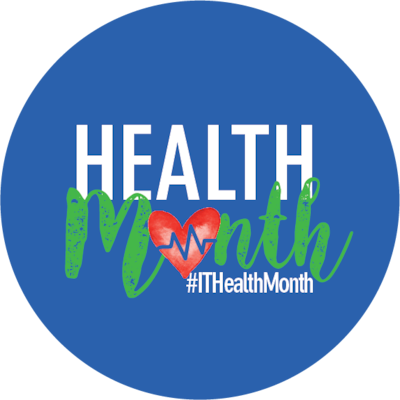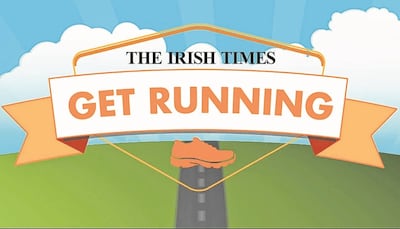
For 25 years, Wei Liu had been practising and teaching tai chi, including to people suffering from chronic knee pain, believing the exercises strengthen legs and instils calm.
Then he began running experiments with tai chi and surprised himself. A professor of physical therapy at the University of Texas Health Science Center at San Antonio, he used motion capture sensors to analyse people’s movements during a typical tai chi session. He noticed people shifting their weight and squatting, movements that can actually stress knees and exacerbate pain for some people, not alleviate it.
Today Dr Liu still tells students that tai chi is good for chronic knee pain – just not all of the movements, or forms, that make up a typical session. People with creaky knees should probably skip Laying the Lute and Creeps Low Like Snake, which caused the greatest knee strain in his study. They could continue with Part the Horse’s Mane on Both Sides and any other form that doesn’t amplify pain.
Dr Liu’s study, and a wealth of additional science and experience, demonstrate that movement is desirable and therapeutic for almost anyone experiencing chronic pain. But finding the best activities to help you deal with your particular pain may require mixing and matching exercise options, asking the right questions about why you hurt afterward and finding the right trainer or physical therapist.
Not so long ago, most doctors and therapists advised people with chronic pain to rest and avoid activity, according to a 2017 review of studies related to exercise and chronic pain.
People’s pain thresholds
But accumulating evidence in the past few decades showed that "being inactive will tend to reinforce pain sensitivity pathways", said Daniel Belavy, a professor of physiotherapy at the University of Applied Sciences in Bochum, Germany, who studies how moving influences chronic pain, especially back pain.
Exercise, on the other hand, often reduces feelings of pain immediately afterward and raises people's pain thresholds, studies show. Its benefits, in fact, often eclipse those of other common treatment options, such as massage and stress management.
Today "international clinical guidelines for most chronic musculoskeletal pain conditions recommend exercise therapy and physical activity as core treatments", said Jonas Bloch Thorlund, a professor of musculoskeletal health at the University of Southern Denmark who studies exercise and pain.
The problem is that, while some type of exercise generally helps almost everyone deal with chronic pain, finding the precise workout to relieve your particular pain often requires trial and error and persistence. Even activities famous for soothing pain do not work for everyone.
Take yoga. In a 2020 analysis of research about it and similar practices, the authors conclude that yoga generally improves physical function, quality of life and pain for many people with "knee osteoarthritis, rheumatoid arthritis, neck pain, headaches and low back pain". But, the review said, relief is often slight and some participants wind up reporting more pain after they take up yoga.
The same dynamic plays out in other studies of exercise therapy for chronic pain. "Some people respond well" to yoga or tai chi or swimming or strength training or walking, and others do not, said Dr Melissa Phuphanich, a resident in physical medicine at the University of California, Los Angeles, who was an author of the 2020 analysis.
The good news is that this very inconsistency opens options. “In knee osteoarthritis, which is one of my research areas,” said Dr Thorlund. “Researchers cannot really find a large difference between different types of exercise” for pain management. So, maybe start with a short walk in a scenic spot, like a park, and see how your body reacts (after clearing it with your doctor, of course).
Once you have clearance from a health professional to exercise, evaluate your pain, life, schedule, dislikes and finances as objectively as possible, since each influences your ideal exercise routine.
"Certain activities may be friendlier to people with certain limitations," said Kirsten Ambrose, the associate director of the Osteoarthritis Action Alliance at the University of North Carolina's Thurston Arthritis Research Center. "Non-weight-bearing activities, like water-based or pool activities or bicycling may be more tolerable for some people with joint pain." But joining and getting to a facility with a pool or purchasing a bike and navigating roads and paths can be intimidating or prohibitively expensive.
In that case, start small. “You don’t have to limit yourself to traditional exercise, like walking on a treadmill for a certain number of minutes or miles,” Ambrose said. “You can count gardening or walking the dog. The goal is to increase the amount of time spent moving versus sitting.”
Anyone beginning a new exercise programme, however, should be aware that the effort often hurts at first. Some soreness a day or so after an unfamiliar workout is normal and even desirable, since it signals the muscles are reacting as they should to the exercise, Dr Belavy said.
But it can be difficult to tease apart this from pain that indicates new damage. So, follow the two-hour rule, Ambrose said. “If pain is worse two hours after finishing exercise than it was before you started, this is an indication that you have overdone it and should scale back the next time.”
Ineffective or even harmful
Consult a physical therapist or clinical exercise physiologist, too, if you worry your exercise routine might exacerbate your pain. “Sometimes, there will be things you can’t see for yourself, like perhaps you are nervous about a particular movement,” Dr Belavy said, and wind up performing it in a way that is so tentative or truncated it becomes ineffective or even harmful for your joints or body.
As a result “you might need to be gradually exposed to certain kinds of movements, even if they seem frightening”, he said. People with knee pain who worry about going up and down stairs, for instance, might start by walking in place, raising their knees as if climbing the stairs, until they feel confident in that movement. “Professional guidance can help.”
Finally, know that some of the pain relief from exercise probably originates in your mind. "For many patients with chronic pain, no matter the treatment, a large part of the effect is contextual," said Dr Thorlund, who last year studied the impacts of telling people exercise would decrease or increase their sensations of pain afterward, which it then did.
Contextual factors, he continued, are aspects of exercise that can be psychological or emotional, such as whether you like your physical therapist, enjoy the colour and fit of your workout wear, remember school physical education classes with nostalgia or dread and, yes, the annoying enthusiasm of your spin-class instructor.
According to a wide-ranging review Dr Belavy wrote with colleagues this year, exercise is only a little better for treating chronic pain than placebos, like pills or fake electrical pulses that subjects thought were painkillers. But people experienced some relief in all cases, suggesting that placebos do help ease pain. "Exercise definitely has beneficial effects on chronic pain," Dr Belavy said. It's just that some of those effects depend on how well you expect exercise to work.
So, if you are exercising and your pain is barely budging, try changing something – or everything – about your workouts, until you feel confident in their benefits. Speed date with spin class instructors to find the one whose energy syncs best with yours, purchase comfy new sneakers, ask your physical therapist to update his dreary waiting-room soundtrack or take up tai chi for the first time. – This article first appeared in the New York Times.

Sign up for one of The Irish Times' Get Running programmes (it is free!).
First, pick the eight-week programme that suits you.
- Beginner Course: A course to take you from inactivity to running for 30 minutes.
- Stay On Track: For those who can squeeze in a run a few times a week.
- 10km Course: Designed for those who want to move up to the 10km mark.
Best of luck!








